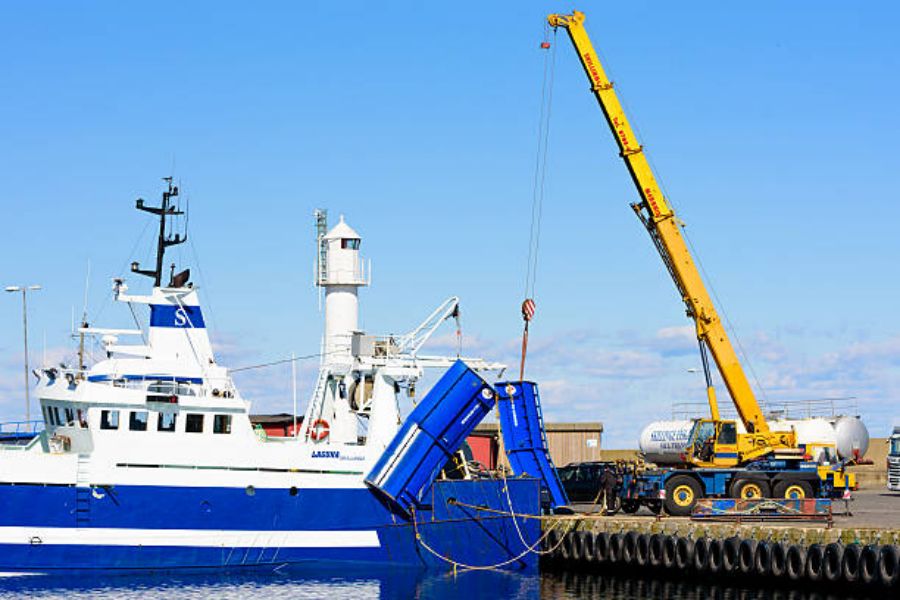
Introduction
A Single Girder Warehouse Crane is a type of overhead crane used in various industrial and warehouse settings. It is a versatile and efficient lifting solution that can handle a wide range of loads within a limited height and span. In this article, we will explore the features, benefits, and usage of this crane in detail.
1. What is a Single Girder Warehouse Crane?
As the name suggests, a Single Girder Warehouse Crane has one girder or beam running across the span of the crane. The girder is supported by end trucks or trolleys that move along the runway rails installed on the building columns or roof structure. The lifting mechanism is attached to the girder and can move vertically to pick up and place loads within the crane's coverage area.
2. What are the Key Features of a Single Girder Warehouse Crane?
The key features of a Single Girder Warehouse Crane are as follows:
- Single girder construction for compact size and weight
- Top running or underslung design for maximum headroom and clearance
- End trucks or trolleys with wheels for smooth and precise movement
- Electric or manual chain hoist for lifting and lowering loads
- Radio remote control or pendant control for easy operation
- Multiple safety devices such as limit switches, overload protection, and emergency stops
3. What are the Benefits of a Single Girder Warehouse Crane?
The benefits of a Single Girder Warehouse Crane are as follows:
- Cost-effective solution for light to medium-duty lifting applications
- Quick installation and easy maintenance with fewer components
- Flexibility to customize the crane to suit specific needs and space requirements
- Precision and accuracy in load positioning and placement
- Improved safety and productivity with ergonomic controls and safety features
- Reduced downtime and energy consumption with efficient motors and drives
4. What are the Applications of a Single Girder Warehouse Crane?
The applications of a Single Girder Warehouse Crane are as follows:
- Material handling and storage in warehouses, distribution centers, and logistics facilities
- Assembly and maintenance of machinery and equipment in manufacturing plants
- Loading and unloading of trucks and containers in ports and terminals
- Maintenance and repair of vehicles and aircraft in maintenance hangars
- Overflow or backup lifting solution to supplement other cranes or hoists
5. What are the Factors to Consider when Choosing a Single Girder Warehouse Crane?
The factors to consider when choosing a Single Girder Warehouse Crane are as follows:
- Load weight and size for proper capacity and clearances
- Lifting height and span for appropriate coverage area and reach
- Building conditions and construction for crane mounting and support
- Environmental and safety regulations for compliance with local and national standards
- Operator skill and training for efficient and safe crane operation
6. What are the Maintenance Requirements for a Single Girder Warehouse Crane?
The maintenance requirements for a Single Girder Warehouse Crane are as follows:
- Regular inspection and lubrication of all crane components and parts
- Replacement of worn or damaged parts such as wire ropes, chains, and brakes
- Cleaning and repair of the girder, runway, and supporting structure
- Testing and calibration of all safety devices and controls
- Record-keeping of all maintenance activities and inspections
7. What are the Safety Measures for a Single Girder Warehouse Crane?
The safety measures for a Single Girder Warehouse Crane are as follows:
- Operator training and certification for safe and efficient crane operation
- Clear and visible signage and warning labels for hazard identification and prevention
- Regular inspection and testing of all safety devices and controls
- Proper use of personal protective equipment such as hard hats, eye and ear protection, and gloves
- Adherence to all environmental and safety regulations and standards
8. What are the Common Issues and Problems with a Single Girder Warehouse Crane?
The common issues and problems with a Single Girder Warehouse Crane are as follows:
- Wear and tear of crane components due to heavy use or lack of maintenance
- Overloading or misuse of the crane beyond its capacity and rating
- Mechanical breakdown or failure of critical parts such as motors, brakes, or hoists
- Electrical problems such as short circuits, voltage fluctuations, or power outages
- Environmental factors such as dust, moisture, or temperature extremes that affect crane performance and reliability
9. What are the Troubleshooting Steps for a Single Girder Warehouse Crane?
The troubleshooting steps for a Single Girder Warehouse Crane are as follows:
- Identify and isolate the problem based on the symptoms and observations
- Refer to the crane manual or manufacturer's instructions for guidance and procedures
- Check and test the affected components and parts for defects or malfunctions
- Replace or repair the faulty parts or assemblies as required
- Verify and test the crane performance and safety before resuming operation
10. What is the Future of Single Girder Warehouse Crane?
The future of Single Girder Warehouse Crane is promising as more industries and businesses adopt automated and robotic systems for material handling and logistics. The integration of smart sensors, IoT devices, and AI technologies in cranes can enhance productivity, efficiency, and safety. Moreover, the use of lightweight and eco-friendly materials such as carbon fiber and recycled plastics can reduce the environmental impact of cranes. The Single Girder Warehouse Crane is likely to remain a popular and viable lifting solution for years to come.

